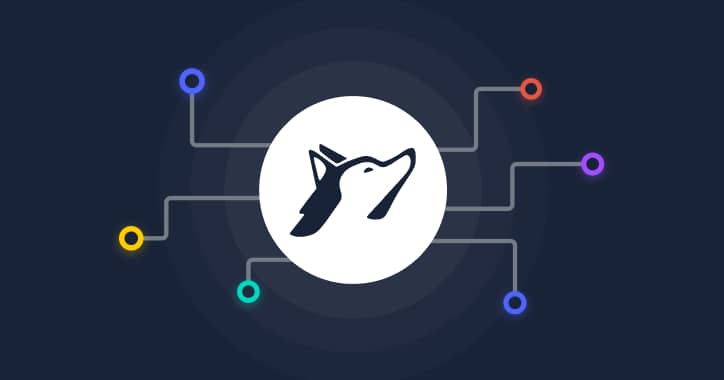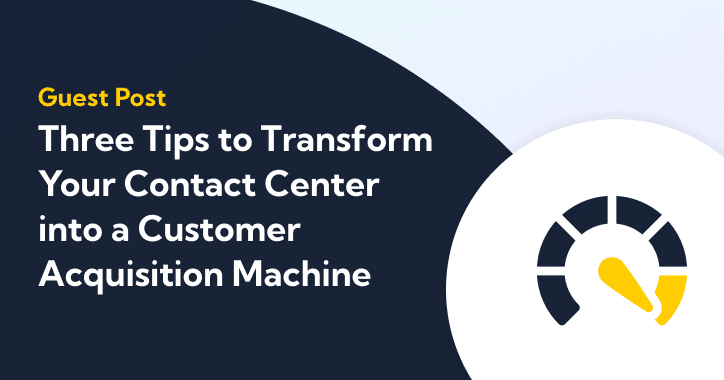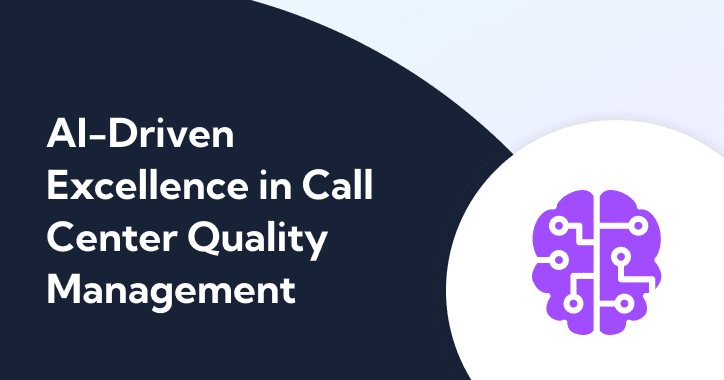
First call resolution (FCR) is used by contact centers and customer service teams to quantify how effectively their employees can solve customer problems. It directly impacts customer satisfaction, operational efficiency, cost savings, agent productivity, customer retention, and brand reputation.
By prioritizing first call resolution, call centers can create positive experiences for customers, improve their bottom line, and establish a competitive advantage in the industry. But how can customer service teams improve their first call resolution rate and improve their contact center performance?
Learn more about this key metric, how to track it, and best practices for your team to improve your contact center.
What is First Call Resolution?
The first call resolution definition is the ratio of calls that are solved the first time a customer reaches out to a contact center compared to the total number of calls a team receives.
This metric is based on the belief that solving problems on the first call increases the chances that the customer has a positive experience with the company. No one wants to have to make repeat calls over and over again because their problem isn’t solved. This metric is used by companies as a way to make their care teams more effective, improve customer satisfaction, and retain customers.
Your first call resolution rate can have a significant impact on your business beyond your customer service efforts. FCR can impact your marketing efforts and affect your profits.
First call resolution is a useful graphic to track the health of your customer service teams. It isn’t the only KPI to keep an eye on in your contact center, but it can warn you that your customers aren’t happy — especially if your FCR is lower than your industry standard. If you invest in your call support team and work to provide better customer care, your FCR should increase in the long run.
The Importance of First Call Resolution
Your customer service efforts have a tremendous impact on your business. According to a 2020 survey by Salesforce of 15,000 consumers, 91% of buyers say a positive customer service experience makes them more likely to make another purchase. If a customer calls your service team with a question and receives an answer on the first call, they are more likely to have a positive experience that drives them to buy.
Not only does your customer service team proactively drive sales, but it also prevents customer attrition. The same Salesforce survey found that 78% of customers will forgive a company’s mistake after receiving excellent service. A customer might be tempted to walk away from your company forever, but good customer service can win them back.
By tracking first contact resolution and setting goals for improvement, you can work to reduce your customer attrition rate. Businesses need a healthy balance of new and returning customers. Returning customers spend more per purchase on average and patronize your business more frequently. The more customers you convince to stay loyal to your business (while attracting new ones) the more your brand can grow.
Why First Call Resolution Matters In Contact Centers
Customer Satisfaction
Resolving customer issues on the first call significantly contributes to customer satisfaction. Customers don’t want to waste time and effort reaching making multiple phone calls to get their problems resolved. By effectively resolving their concerns during the initial interaction, call centers can leave customers feeling satisfied and valued.
Cost Efficiency
First call resolution helps call centers optimize their resources and reduce operational costs. When issues are resolved on the first call, it eliminates the need for follow-up interactions, which require additional time and resources. By minimizing call volumes and call durations, contact centers can achieve cost savings while maintaining or improving service quality.
Improved Agent Productivity
Resolving issues on the first call boosts call center agent productivity. Agents can handle a higher volume of calls and address more customer concerns when they can effectively resolve issues during the initial call interaction. This efficiency allows call centers to better utilize their workforce, leading to improved service levels and increased customer satisfaction.
Brand Reputation
Providing excellent customer service, including high FCR rates, contributes to a positive brand reputation. Customers are more likely to recommend a company that resolves their issues effectively on the first call. Positive customer surveys, word-of-mouth and online reviews can attract new customers and strengthen the brand’s reputation in the market.
How To Measure the Success of First Call Resolution
Once you have an understanding of first call resolution, you can take steps to implement this metric into your contact center and other customer service infrastructure. Effective customer service is measurable. It allows you to understand your current performance and set goals for growth. Call centers can track FCR internally and externally.
Internal Measurements: The First Call Resolution Formula
The first step is to understand the first call resolution formula. Start by tracking the total number of calls your customer retention or customer experience teams receives (for your particular FCR needs, you can track calls, texts, emails, social media messages, chats, and other methods of customer communication). Then track the number of times a problem is resolved in the first call versus calls that need extra help or repeat calls. You can then calculate your first call resolution ratio by dividing the two numbers.
For example, assume your service center receives 500 customer calls over a month. If 350 are resolved the first time a customer reaches out, then your first call resolution ratio is 350/500 – or 70%.
With this metric on hand, you can take steps to improve your customer service. Over a quarter, you may set a goal to improve your first call resolution by 5%. This means 25 more customers only have to call once — increasing your chances that they have a positive experience and continue buying from your company.
External Metrics: Measuring First Call Resolution by Industry
Internal measurements can help you understand your own first call resolution levels, but external metrics can give your business an idea of how it compares to others. Across all industries, most companies try to hit a 75% FCR level. However, this rate might not be possible for your company.
Every industry is different. Some industries have problems that are more complex than others and take longer to solve. If you want to review external metrics for first call resolution, look at how your competitors handle customer service inquiries. Brands in your industry can give you a clearer view of resolution targets to work toward.
Both internal and external metrics can drive you to improve your FCR. You can set goals for your improvement and work to offer the best customer service in your market.
Training for First Call Resolution
Setting goals for improvement is a good first step toward boosting your first call resolution; however, without actionable tactics, your contact center will have no way to solve more problems on the first call. Small steps have a big impact. When you implement multiple changes to improve your customer service department, you can watch your first call resolution rate increase and the number of satisfied customers grow.
Consider a few of these first call resolution best practices:
Create an Empathetic Experience on Customer Calls
Empathy involves understanding and sharing feelings from one person to another. It is an incredibly powerful emotion in customer service. Your callers want their problems to be solved, but many of them also want to be heard. By training your staff members to provide empathy over the phone, you can increase the patience of customers and give your team more time to solve problems.
Admittedly, introducing empathetic best practices may increase the average call time in your center. But the extra seconds are worth it if your company is retaining more customers and solving more problems on the first call.
Utilize call guidance software
Knowledgeable employees and problem solvers can jump into action when faced with an issue and work to resolve it. While you can’t account for every problem that comes through your contact center, you can identify the most common issues and how teams can overcome common objections.
Traditionally, these common issues were addressed by updating and maintaining call scripts. The recent advent of AI solutions, like Balto’s Real-Time Guidance platform, removes the need to constantly maintain scripts.
Consider investing in call center software for your agents. When a customer makes a request, your agents will get a detailed response, and quickly address the customer’s needs. This reduces stress on agents because they know that most problems are easily solved in real-time.
Receive and Provide Clear Feedback
Consider tracking first call resolution rates on an individual level as well as a team level. Some team members may need additional training or support to help with difficult customers.
While you personally can’t listen to every call, there are customer care AI tools that listen to calls and identify patterns that are good and bad. With this service, your team members can receive coaching advice, even if managers are busy. You can also review coaching trends to see if you need to implement team-wide training or meet with a few employees one-on-one.
Improve Your First Call Resolution Rate with Balto
Every employee contributes to your contact center’s first call resolution rate. By addressing small issues that contribute to multiple calls, you can have a big impact on your customer service success.
Balto’s AI-powered, real-time guidance capabilities automatically show agents the right thing to say on every call, helping ensure more customer calls are resolved at first contact.
We’re happy to offer you a free demo of the Balto software so you can explore how it works in practice.






